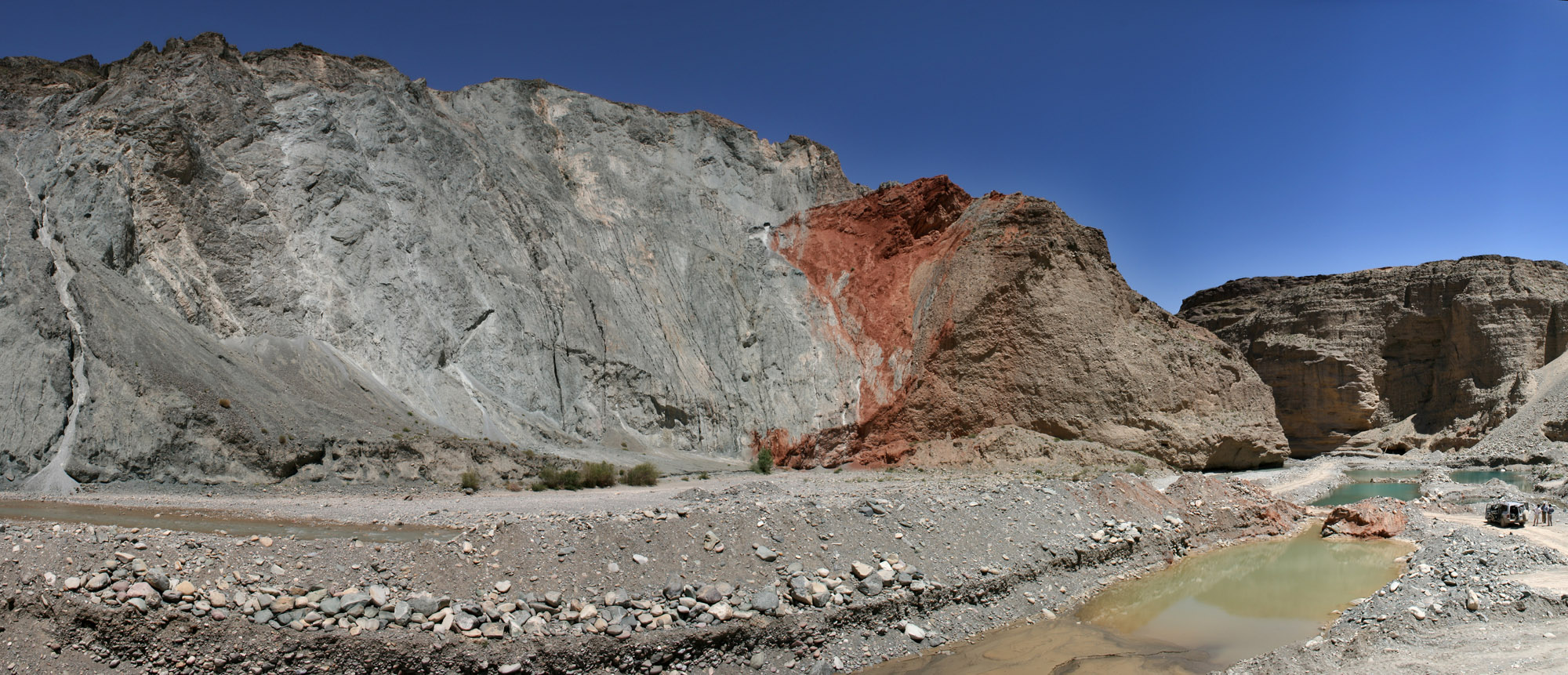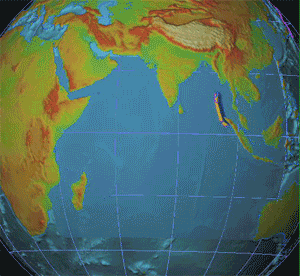|
Caño Tomás Fault
The Caño Tomás Fault () is a thrust fault in the department of Norte de Santander in northern Colombia. The fault has a total length of and runs along an average north-northeast to south-southwest strike of 011.4 ± 8 in the Eastern Ranges of the Colombian Andes. Etymology The fault is named after Caño Tomás a ''vereda'' of Teorama.Paris et al., 2000, p.11 Description The fault with a total length of is located about to the west of the town of Tibú, Norte de Santander, along the eastern base of the Eastern Ranges of the Colombian Andes. In the northern part, the fault places agglomerates and breccias of Jurassic to Triassic age against shales and sandstones of Cretaceous age. Farther south, it places Precambrian gneisses and migmatites against Cretaceous and Jurassic to Triassic rocks. The thrust fault, with an approximate strike Strike may refer to: People *Strike (surname) * Hobart Huson, author of several drug related books Physical confrontation or removal *St ... [...More Info...] [...Related Items...] OR: [Wikipedia] [Google] [Baidu] |
Teorama
Teorama is a Colombian municipality located in the department of North Santander. Climate References *Government of Norte de Santander - Teorama Municipalities of the Norte de Santander Department {{NortedeSantander-geo-stub ... [...More Info...] [...Related Items...] OR: [Wikipedia] [Google] [Baidu] |
Triassic
The Triassic ( ; sometimes symbolized 🝈) is a geologic period and system which spans 50.5 million years from the end of the Permian Period 251.902 million years ago ( Mya), to the beginning of the Jurassic Period 201.4 Mya. The Triassic is the first and shortest period of the Mesozoic Era and the seventh period of the Phanerozoic Eon. Both the start and end of the period are marked by major extinction events. The Triassic Period is subdivided into three epochs: Early Triassic, Middle Triassic and Late Triassic. The Triassic began in the wake of the Permian–Triassic extinction event, which left the Earth's biosphere impoverished; it was well into the middle of the Triassic before life recovered its former diversity. Three categories of organisms can be distinguished in the Triassic record: survivors from the extinction event, new groups that flourished briefly, and other new groups that went on to dominate the Mesozoic Era. Reptiles, especially archosaurs, were the ... [...More Info...] [...Related Items...] OR: [Wikipedia] [Google] [Baidu] |
Thrust Faults
A thrust fault is a break in the Earth's crust, across which older rocks are pushed above younger rocks. Thrust geometry and nomenclature Reverse faults A thrust fault is a type of reverse fault that has a dip of 45 degrees or less. If the angle of the fault plane is lower (often less than 15 degrees from the horizontal) and the displacement of the overlying block is large (often in the kilometer range) the fault is called an ''overthrust'' or ''overthrust fault''. Erosion can remove part of the overlying block, creating a ''fenster'' (or ''window'') – when the underlying block is exposed only in a relatively small area. When erosion removes most of the overlying block, leaving island-like remnants resting on the lower block, the remnants are called ''klippen'' (singular '' klippe''). Blind thrust faults If the fault plane terminates before it reaches the Earth's surface, it is called a ''blind thrust'' fault. Because of the lack of surface evidence, blind thrust fau ... [...More Info...] [...Related Items...] OR: [Wikipedia] [Google] [Baidu] |
Seismic Faults Of Colombia
Seismology (; from Ancient Greek σεισμός (''seismós'') meaning "earthquake" and -λογία (''-logía'') meaning "study of") is the scientific study of earthquakes (or generally, quakes) and the generation and propagation of elastic waves through planetary bodies. It also includes studies of the environmental effects of earthquakes such as tsunamis; other seismic sources such as volcanoes, plate tectonics, glaciers, rivers, oceanic microseisms, and the atmosphere; and artificial processes such as explosions. Paleoseismology is a related field that uses geology to infer information regarding past earthquakes. A recording of Earth's motion as a function of time, created by a seismograph is called a seismogram. A seismologist is a scientist who works in basic or applied seismology. History Scholarly interest in earthquakes can be traced back to antiquity. Early speculations on the natural causes of earthquakes were included in the writings of Thales of Miletus (), An ... [...More Info...] [...Related Items...] OR: [Wikipedia] [Google] [Baidu] |


